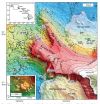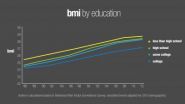(Press-News.org) There are thousands of drugs that silence many thousands of cancer-causing genetic abnormalities. Some of these drugs are in use now, but many of these drugs are sitting on shelves or could be used beyond the disease for which they were originally approved. Repurposing these drugs depends on matching drugs to targets. A study recently published in the journal Bioinformatics describes a new database and pattern-matching algorithm that allows researchers to evaluate rational drugs and drug combinations, and also recommends a new drug combination to treat drug-resistant non-small cell lung cancer.
"Most cancers have more than one genetic alternation. And even genetically targeted drugs tend to affect more than only their stated target. And so the challenge is matching drugs with many effects to cancers with many causes in a way that best maps the drugs' effects onto the intended targets," says Aik Choon Tan, PhD, investigator at the University of Colorado Cancer Center and associate professor of Bioinformatics at the CU School of Medicine.
There are about 500 kinases in the human genome, each of which represents a potentially important drug target. Tan describes the database as a spreadsheet with 500 columns, each column representing a kinase. Heading each row is a drug and then in each column cell is that drug's activity against the kinase.
"Imagine you know a cancer is caused by five kinases acting in unison," Tan says. "Our approach would allow you to query the database for this pattern and discover the drug or combination of drugs that best match the genetic needs."
Because many of these drugs have already earned FDA approval for use in other diseases, the processes of repositioning these drugs for new diseases is much less involved and expensive than if drug developers had started fresh.
Tan and colleagues put the technique to use to recommend drugs that could turn off the kinases that non-small cell lung cancer uses to create resistance existing treatments. It's been an important question – many lung cancers depend on over-activation of the gene EGFR, but then when EGFR inhibitors like gefitinib or erlotinib are used, the cancers tend to activate other "kinases" that allow the cancer to by-pass around this dependence. Tan and colleagues asked what are these kinases that allow lung cancer to evade gefitinib, and what other drug might turn them off.
The answer may be in the drug bosutinib, developed by Pfizer, which earned FDA approval in 2013 for the treatment of chronic myeloid leukemia. The drug out-competes the body's energy source, ATP, for space in kinases and so keeps them from being activated. And it turns out that bosutinib may inhibit the activity of exactly the kinases that EGFR-dependent lung cancers need to mutate around the challenge of EGFR inhibitors.
In tests on EGFR-dependent lung cancer cell lines, Tan and colleagues show that the drugs gefitinib and bosutinib "showed additive and synergistic effects."
In a mechanism that Tan hopes will become common, his group will now hand off this rational combination to other researchers at the CU Cancer Center and elsewhere who will move the drugs toward a human clinical trial.
INFORMATION:
Described research required a team including bioinformatics, basic and clinical researchers at the CU Cancer Center and National Jewish Health. Co-authors of this reserach are: Jihye Kim, Vihas T. Vasu, Rangnath Mishra, Katherine R. Singleton, Minjae Yoo, Sonia M. Leach, Eveline Farias-Hesson, Robert J. Mason, Jaewoo Kang, Preveen Ramamoorthy, Jeffrey A. Kern, Lynn E. Heasley and James H. Finigan.
The K-Map database is online and free for use at tanlab.ucdenver.edu/kMap/.
Drug-target database lets researchers match old drugs to new uses
K-Map database details drugs and targets
2014-05-22
ELSE PRESS RELEASES FROM THIS DATE:
TSRI scientists catch misguided DNA-repair proteins in the act
2014-05-22
LA JOLLA, CA – May 22, 2014 – Accumulation of DNA damage can cause aggressive forms of cancer and accelerated aging, so the body's DNA repair mechanisms are normally key to good health. However, in some diseases the DNA repair machinery can become harmful. Scientists led by a group of researchers at The Scripps Research Institute (TSRI) in La Jolla, CA, have discovered some of the key proteins involved in one type of DNA repair gone awry.
The focus of the new study, published in the May 22, 2014 edition of the journal Cell Reports, is a protein called Ring1b. The TSRI ...
Univ. of MD researchers identify fat-storage gene mutation that may increase diabetes risk
2014-05-22
BALTIMORE – May 21, 2014. Researchers at the University of Maryland School of Medicine have identified a mutation in a fat-storage gene that appears to increase the risk for type 2 diabetes and other metabolic disorders, according to a study published online today in the New England Journal of Medicine.
The researchers discovered the mutation in the hormone-sensitive lipase (HSL) gene by studying the DNA of more than 2,700 people in the Old Order Amish community in Lancaster County, Pa. HSL is a key enzyme involved in breaking down stored fat (triglycerides) into fatty ...
Ka'ena Volcano: First building block for O'ahu discovered
2014-05-22
Boulder, Colo., USA – Researcher John Sinton of the University of Hawai'i along with colleagues from the Monterrey Bay Aquarium and the French National Center for Scientific Research have announced the discovery of an ancient Hawaiian volcano. Now located in a region of shallow bathymetry extending about 100 km WNW from Ka'ena Point at the western tip of O'ahu, this volcano, which they have named Ka'ena, would have risen about 1,000 meters above sea level 3.5 million years ago.
Sinton and colleagues have found compelling evidence beneath the sea that this long-lived ...
Intuitions about the causes of rising obesity are often wrong, researchers report
2014-05-22
CHAMPAIGN, Ill. — Everything you think you know about the causes of rising obesity in the U.S. might be wrong, researchers say in a new report.
Contrary to popular belief, people are exercising more today, have more leisure time and better access to fresh, affordable food – including fruits and vegetables – than they did in past decades. And while troubling disparities exist among various groups, most economic, educational, and racial or ethnic groups have seen their obesity levels rise at similar rates since the mid-1980s, the researchers report.
The new analysis appears ...
Review says inexpensive food a key factor in rising obesity
2014-05-22
ATLANTA May 22, 2014—A new review summarizes what is known about economic factors tied to the obesity epidemic in the United States and concludes many common beliefs are wrong. The review, authored by Roland Sturm, PhD of RAND Corporation and Ruopeng An, PhD, of the University of Illinois at Urbana-Champaign, notes that paradoxically, rising obesity rates coincided with increases in leisure time, increased fruit and vegetable availability, and increased exercise uptake. The review appears early online in CA: A Cancer Journal for Clinicians and finds at least one factor ...
Scientists find new way to combat drug resistance in skin cancer
2014-05-22
RAPID RESISTANCE to vemurafenib – a treatment for a type of advanced melanoma, the deadliest form of skin cancer – could be prevented by blocking a druggable family of proteins, according to research* published in Nature Communications today (Thursday).
Scientists at the Cancer Research UK Manchester Institute, based at the University of Manchester, have revealed the MLK family of four enzymes 'undoes' the tumour-shrinking effects of vemurafenib**.
Around half of metastatic melanomas – aggressive skin cancer that has spread to other parts of the body – are caused by ...
Canada funds 65 innovative health projects to help save every woman, every child
2014-05-22
Grand Challenges Canada, funded by the Government of Canada, today announces investments of $12 million in projects worldwide, aimed squarely at improving the health and saving the lives of mothers, newborns and children in developing countries.
From a "lucky iron fish" placed in tens of thousands of Asian cooking pots to reduce anemia, to "motherhood insurance" to ensure that poverty doesn't impede emergency care if needed during a baby's delivery, to kits for home farming edible insects to improve nutrition in slums of Africa and Latin America, the 65 imaginative projects ...
New insights into premature ejaculation could lead to better diagnosis and treatment
2014-05-22
There are many misconceptions and unknowns about premature ejaculation in the medical community and the general population. Two papers, both being published simultaneously in Sexual Medicine and the Journal of Sexual Medicine, provide much-needed answers that could lead to improved diagnosis and treatment for affected men.
Premature ejaculation can cause significant personal and interpersonal distress to a man and his partner. While it has been recognized as a syndrome for well over 100 years, the clinical definition of premature ejaculation has been vague, ambiguous, ...
Could cannabis curb seizures? Experts weed through the evidence
2014-05-22
The therapeutic potential of medical marijuana and pure cannabidiol (CBD), an active substance in the cannabis plant, for neurologic conditions is highly debated. A series of articles published in Epilepsia, a journal of the International League Against Epilepsy (ILAE), examine the potential use of medical marijuana and CBD in treating severe forms of epilepsy such as Dravet syndrome.
In a case study, Dr. Edward Maa, Chief of the Comprehensive Epilepsy Program at Denver Health in Denver, Colo., details one mother's experience of providing medical marijuana to her child ...
Scientists announce top 10 new species for 2014
2014-05-22
SYRACUSE, N.Y. — An appealing carnivorous mammal, a 12-meter-tall tree that has been hiding in plain sight and a sea anemone that lives under an Antarctic glacier are among the species identified by the SUNY College of Environmental Science and Forestry's (ESF) International Institute for Species Exploration (IISE) as the top 10 species discovered last year.
An international committee of taxonomists and related experts selected the top 10 from among the approximately 18,000 new species named during the previous year and released the list May 22 to coincide with the birthday, ...
LAST 30 PRESS RELEASES:
Making lighter work of calculating fluid and heat flow
Normalizing blood sugar can halve heart attack risk
Lowering blood sugar cuts heart attack risk in people with prediabetes
Study links genetic variants to risk of blinding eye disease in premature infants
Non-opioid ‘pain sponge’ therapy halts cartilage degeneration and relieves chronic pain
AI can pick up cultural values by mimicking how kids learn
China’s ecological redlines offer fast track to 30 x 30 global conservation goal
Invisible indoor threats: emerging household contaminants and their growing risks to human health
Adding antibody treatment to chemo boosts outcomes for children with rare cancer
Germline pathogenic variants among women without a history of breast cancer
Tanning beds triple melanoma risk, potentially causing broad DNA damage
Unique bond identified as key to viral infection speed
Indoor tanning makes youthful skin much older on a genetic level
Mouse model sheds new light on the causes and potential solutions to human GI problems linked to muscular dystrophy
The Journal of Nuclear Medicine ahead-of-print tip sheet: December 12, 2025
Smarter tools for peering into the microscopic world
Applications open for funding to conduct research in the Kinsey Institute archives
Global measure underestimates the severity of food insecurity
Child survivors of critical illness are missing out on timely follow up care
Risk-based vs annual breast cancer screening / the WISDOM randomized clinical trial
University of Toronto launches Electric Vehicle Innovation Ontario to accelerate advanced EV technologies and build Canada’s innovation advantage
Early relapse predicts poor outcomes in aggressive blood cancer
American College of Lifestyle Medicine applauds two CMS models aligned with lifestyle medicine practice and reimbursement
Clinical trial finds cannabis use not a barrier to quitting nicotine vaping
Supplemental nutrition assistance program policies and food insecurity
Switching immune cells to “night mode” could limit damage after a heart attack, study suggests
URI-based Global RIghts Project report spotlights continued troubling trends in worldwide inhumane treatment
Neutrophils are less aggressive at night, explaining why nighttime heart attacks cause less damage than daytime events
Menopausal hormone therapy may not pose breast cancer risk for women with BRCA mutations
Mobile health tool may improve quality of life for adolescent and young adult breast cancer survivors
[Press-News.org] Drug-target database lets researchers match old drugs to new usesK-Map database details drugs and targets



